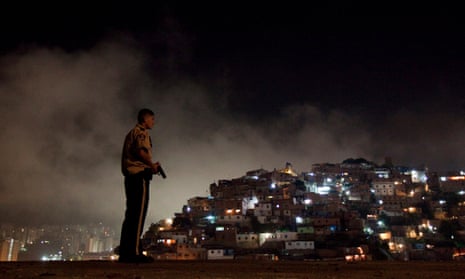The global homicide rate rose last year for the first time in more than a decade, with marked increases in Venezuela and Jamaica, a study has shown.
The Small Arms Survey report, published on Thursday, estimated that 385,000 people were killed in homicides across the world in 2016, an increase of 8,000 on the previous year.
Despite that, the report estimated that the overall number of violent deaths had decreased, primarily as a result of fewer people being killed in wars in 2016 than in 2015.
Of the five countries with the highest violent death rates in 2016 – Syria, El Salvador, Venezuela, Honduras, and Afghanistan – only two had armed conflicts last year.
The researchers noted that while the increase in the homicide rate “does not necessarily indicate a new trend … it signals growing insecurity in non-conflict areas”. Taking into account population rises, 2016 had a global homicide rate per 100,000 of 5.15 – 0.04 points higher than in 2015.
“As the uptick in homicides affects far more people’s perceptions of local security than does the drop in conflict deaths, however, the overall decrease in violent deaths is unlikely to lead to an increased sense of safety at the global scale,” the researchers said.
Of the 23 countries with a violent death rate of more than 20 people per 100,000, 14 were not not involved in wars: they include Brazil, Jamaica, the Dominican Republic and South Africa.
The report said in such countries “crime claimed, in proportion to their populations, as many victims as some high-intensity conflicts”.
The number of people killed as a direct result of armed conflict fell from a peak in 2014 of 143,000, to 119,000 the following year and 99,000 in 2016. That resulted in a fall in the rate per 100,000 people from 1.96 in 2014 to 1.32, according to the report.
This helped the overall rate of violent deaths fall from 7.73 per 100,000 population to 7.50 between 2015 and 2016. The report’s authors, Claire McEvoy and Gergely Hideg, said more than a million lives could be saved by 2030 if the trend continued.
“The annual number of violent deaths is likely to increase to approximately 610,000 by 2030, primarily due to population growth,” they wrote.
“Yet if states were able to replicate the results of the countries that have been most successful at preventing and controlling violence in their respective world regions, that number could drop to about 408,000, meaning that about 1.35 million lives could be saved between 2017 and 2030.”
The Small Arms Survey’s report, Global Violent Deaths 2017, was produced with the support of the Swiss Agency for Development and Cooperation. The group is funded by several governments and its past work has been supported by international organisations, such as UN agencies.
